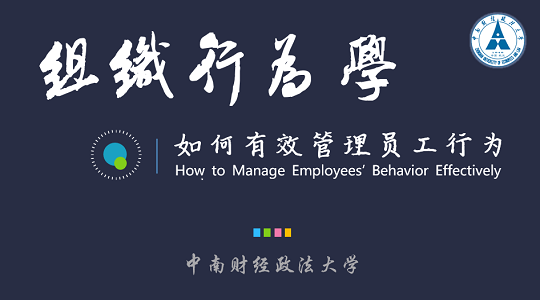
当前课程知识点:国际医学会议交际英语 > Chapter 12 Understanding Conference Etiquette > Exercise > Chapter 7 Part 4
Hello everyone
I'm Liu Juan
From Capital Medical University
welcome to our English for presentations
at international medical conferences
Now we continue to talk about
conclusions and ending
Objectives
upon completion of this section
you are expected to know the function
of the conclusion
and ending part of a presentation
get familiarized with suggested ways
to present conclusions
or to end a presentation
grasp useful phrases on how to present
conclusions or to end a presentation
Function
A good conclusion
brings closure to a presentation
and also seeks a lasting impact
Because the conclusion
is the last part of the talk
it is often the part
the audience remembers past
Important elements of a conclusion are
a review of the topic
and the purpose of the presentation
a statement of the conclusions
or recommendations to be drawn
from your research work
an indication of the next stages
such as
what might be done to take this work further
Four
an instruction as to what happens next
For example
questions
discussion or group work
Five
a “thank you” to the audience
for their attention and participation
Three
Suggested ways to present conclusions
or to end a presentation
In the conclusion section
you should state the conclusions
clearly and succinctly
talk about the future work
and elicit feedback from the audience
Below are some ways to present conclusions
or to end a presentation
One
use a picture
This is probably the easiest way to end
the presentation
There are many ways to use
pictures in the final slide
You can
You can exploit the key picture again
that you used earlier in the presentation
This picture should be chosen so that
it reminds the audience of an important point
that you mentioned earlier
You can use another photo or a collage
of photos depicting
scenes from your hospital
institute
university
and suggest that the audience
travel there sometime
You can create a picture that illustrates
your concepts or simply give the idea
of the future of work
or work in progress
Two
Refer back to the title
or your opening
A standard piece of advice on closing
is to return to the title
or your opening
for example
refer to whatever hook you
used in starting your presentation
This can be a wrap-up of a story you started
or an answer to a question you posed
It also can be a reaffirmation
of your presentation title
or the title of the conference
at which you’re speaking
Give your speech a provocative title
that highlights your message memorably
Then use the title of your speech
as your closing words to stir your audience
to think fully about what they just heard
to think fully about what they just heard
reinforcing the title of the speech
Refer back to your opening anecdote
or quote and say
We have arrived
now where we began
Then reiterate the message
you want your audience to remember
This will achieve symmetry
in the classic 3-part speech outline
which includes
tell the audience what you are going to tell them
then tell them
then tell them what you just told them
Three
End with a punchy line
A punchy line
just like the tagline in a movie
is an attention magnet
It cuts to the core of your central message
and is one of the most memorable parts
Think about how you can distill your message
down to a crisp
memorable statement
For example
Steve Jobs’ famous
last line at his commencement address
at Stanford University
Stay hungry
Stay foolish
Also
remember the rule of three
one of the most memorable patterns
For example
location
location
location
life
liberty and the pursuit of happiness
Or the three words slogans
such as Just Do It.
Here are a few examples
of how speakers do it
Jeremy Gutsche
CEO of TrendHunter.com
ends his speech on innovation
ends his speech on innovation
with three key benefits
He said by leveraging viral trends and
methodical innovation
you can generate Ideas
harness creativity and ultimately
exploit chaos
Dianna Cohen
co-founder of the Plastic Pollution Coalition
ends her talk on plastic pollution
ends her talk on plastic pollution
with the Rule of Three
In using alternatives to single-use plastics
she said
we can save our oceans
save our planets
save ourselves
save ourselves
Alan Siegel
a brand identity consultant
also uses the Rule of Three to end
his speech on simplifying legal language
How are we going to change the world
He asks
Make clarity
transparency and simplicity
a national priority
Four
close with a provocative question
Ending with a question
or a rhetorical question
is a sure way to gain attention
because questions stimulate our brains
The minute you ask a question
listeners are generally drawn to ponder an answer
It’s even more engaging
when the question is provocative
or when it touches potentially
sensitive areas of our lives
For example
Entrepreneur and CEO Ric Elias ends his talk on
“3 Things I Learned While My Plane Crashed”
with a series of life questions
with the most provocative one at the very end
And more than anything
are you being the best parent you can
You can also ask a question and answer it
For example
“What is personal in this digital era
Nothing Your life is on full display
Five
Talk about your future work
The plan for the future actually one of the
main reasons you are at the conference
This is a fantastic opportunity to do some
self-promotion
One of the audience
might be interested in helping you
or collaborating with you
Tell the audience that you would
welcome speaking to anyone who could suggest
who could suggest ways of continuing
your line of research
If you have done a convincing presentation
and have showed that you are the kind of person
other people might like working with
not just because of your scientific knowledge
but equally important
how you seem as a person
then you might find that you get an invitation
to work in another laboratory
that might have more equipment
or funds than your current one
Talking about future work
is particularly appropriate when you have
presented negative findings
when you have told the audience that
your research did not go as you expected
You can also use your conclusions
to talk about the limitations of your work
In both cases
your future work will probably thus involve
rectifying the problems you encountered
and telling the audience
how you plan to do this
For example
Six
Call to action
If your presentations’ primary purpose
is to move the audience to action
use the last few minutes
of the presentation to reinforce
the call to action you seek
Assume that your presentation has
delivered the information needed
by the audience members to move them
in a direction
and make your call to action
definitive and instructional
Examples include the following
Seven
End with a compelling story
Ending your presentation with a story
especially if that story is personal
especially if that story is personal
or illustrates how the content
presented affects others
creating empathy with your audience
and tying the story back to the points
made throughout the presentation
ensures your presentation will hit the mark
Give your ending a touch of humility
In a world where everyone flashes
their achievements and opinions
those with an understated approach shine
When you make a compelling case
in your presentation
there is value sometimes in contrasting
this with a touch of humility at the end
Supermodel Cameron Russell
ends her talk on TED saying
If there is a takeaway to this talk
I hope it’s that we
all feel more comfortable
acknowledging the power of image
in our perceived successes
and our perceived failures
Contrast this with a bolder
As I have proven to you
image plays a powerful role
in our perceived successes
and our perceived failures
Now I would like to share with you
some useful phrases as follows
Expressing opinions and probability
discussions and conclusions
Summarizing
Outlining possible applications
and implications of your work
Outlining the possible future of your findings
The take-home message is a short message
with which you culminate the presentation
Practice
Reflections and practice on how to
present conclusions
What are the main components of conclusions
How to use a picture in presenting conclusions
-Exercise
-Exercise
-Exercise
-Exercise
-Exercise





